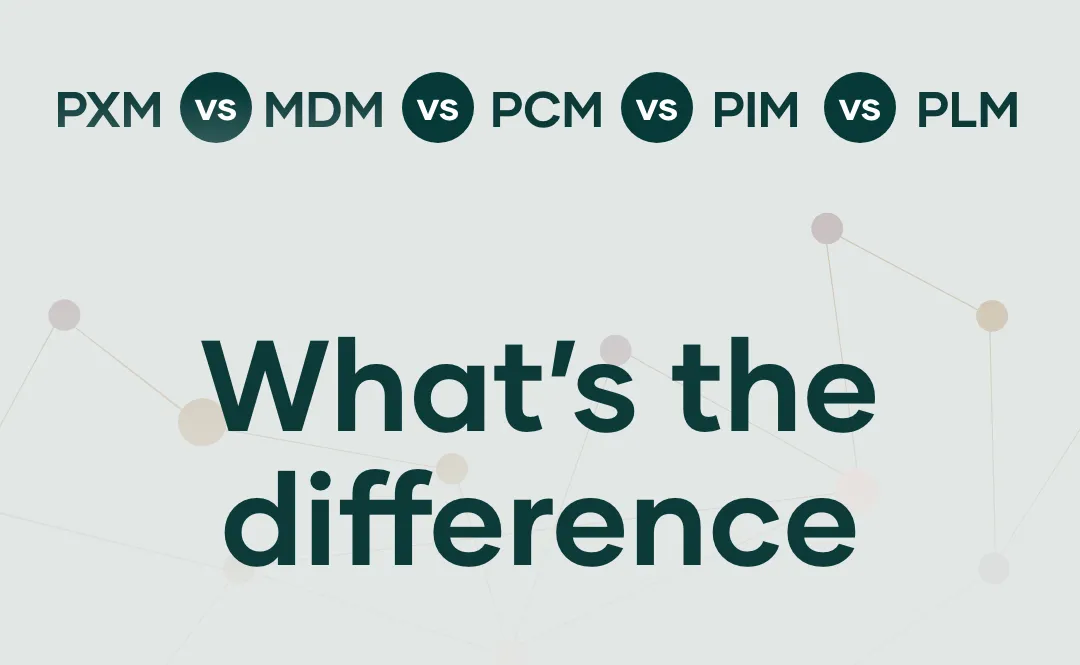PIM vs PDM vs PXM – What’s the Difference?
When exploring product data systems, you’ll often come across terms like PDM, PXM, PCM, or PRM. Sometimes they’re used interchangeably with PIM, while other times they highlight specific focus areas within the broader field of product data and content management.

In short, PIM (Product Information Management) is the foundation – it provides a single source of truth for all your product data, attributes, classifications, and channel-ready information.
PDM (Product Data Management), on the other hand, focuses more on the technical and engineering aspects: version control, bills of materials (BOMs), CAD integration, and detailed product specifications. A PIM system can pull structured data from a PDM system but is not designed to replace those highly technical processes.
PXM (Product Experience Management) builds on top of PIM. Its main goal is to use structured data to deliver the best possible customer experience. This can include adapting product presentation, optimizing product descriptions and images, enabling cross-selling logic, and personalizing content across different sales channels such as websites, mobile apps, marketplaces, or printed catalogs.
PCM (Product Content Management) is closely related to PIM but usually focuses more on managing and publishing marketing and sales content – for example, product descriptions, media files, and localized text. Some vendors consider PCM a subset of PIM with an emphasis on storytelling and content optimization rather than on technical data modeling.
PRM (Product Resource Management) is a less common term but often refers to the operational coordination of product-related resources – such as workflows, tasks, teams, or supplier input involved in managing product data. In some organizations, PRM helps coordinate the people and processes that the PIM system supports.
If your company is large and complex, you might also encounter PLM (Product Lifecycle Management) – the overarching system that manages the entire product lifecycle, from design and engineering changes to production and after-sales service. Many companies use PLM for product development, PDM for technical data, PIM for commercial product information, and PXM to optimize customer experience.
In organizations managing multiple data domains, MDM (Master Data Management) can centralize and govern not only product data but also customer, supplier, and inventory data – often with PIM serving as the product data domain within this larger architecture.
Finally, DAM (Digital Asset Management) is frequently combined with PIM to handle digital media such as images, videos, and documents. While PIM manages structured data, DAM manages unstructured digital assets – together they create a richer and more consistent product experience.
Choosing the right system…
…ultimately depends on your organization’s size, data complexity, and digital maturity. Smaller businesses might rely on a single PIM platform to consolidate all product information, while larger enterprises often require an integrated ecosystem where PDM, PLM, PIM, and DAM work seamlessly together. The true value emerges when data flows freely across the entire value chain – from product design and engineering to marketing and customer engagement – allowing every team to work from the same reliable foundation. In that sense, PIM is not just a technical tool but a strategic cornerstone of digital transformation.